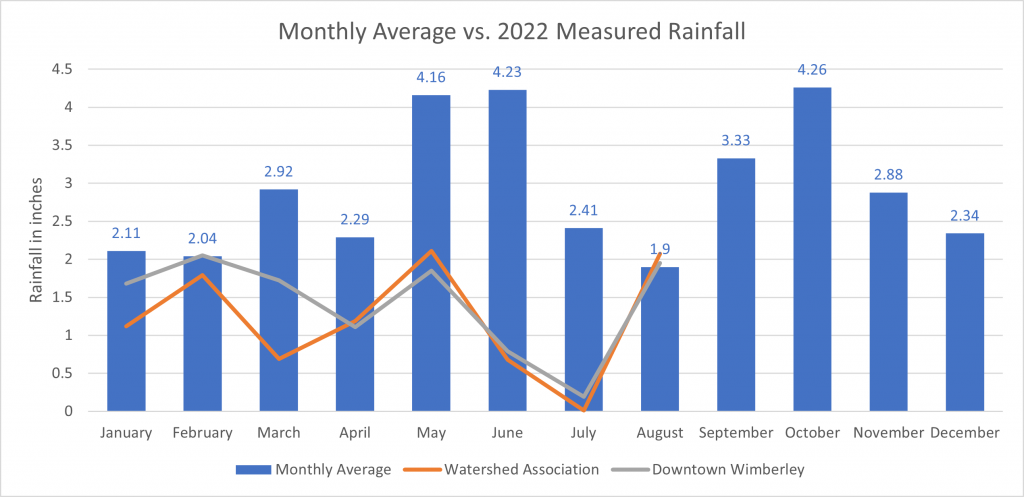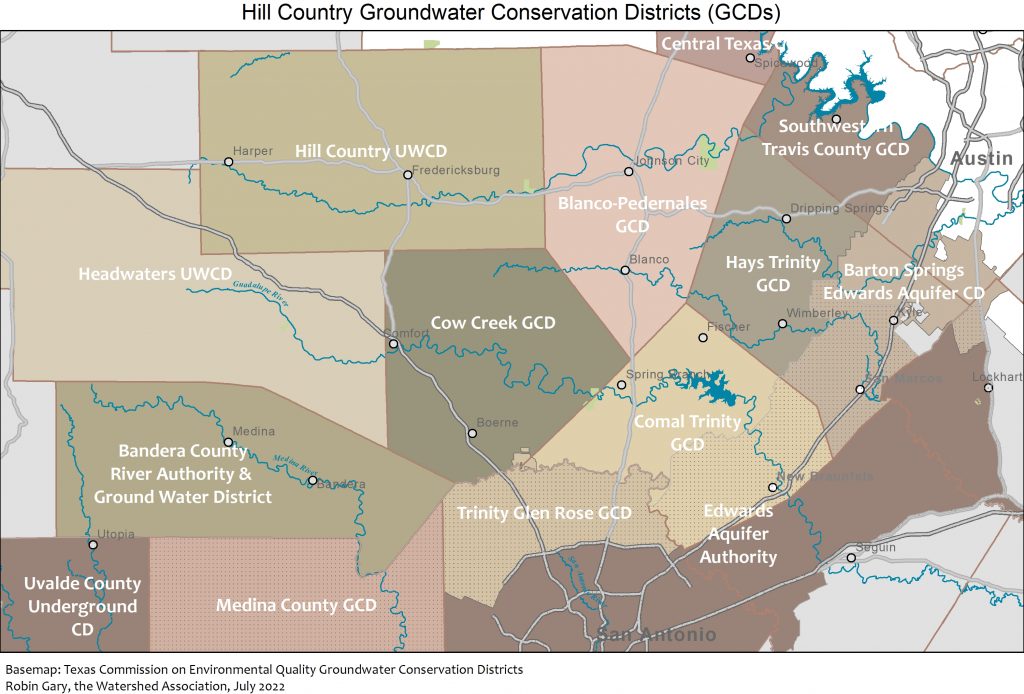In the last weeks of August, Wimberley received between 1.5-2 inches of rain. It’s a refreshing change to the persistent hot, dry weather this summer. Richard Shaver, Director of the Wimberley Parks and Recreation Department, asked a wise question: “What does recovery look like?” With Jacob’s Well basically not flowing (see photo by David Baker above, taken 8/23/22), sections of Cypress Creek are completely dry. There is no inflow or outflow downstream at Blue Hole. Monitor wells are at record lows, and many well owners are having to rely on hauled water.
All of the Hill Country is experiencing rainfall deficits which leading to pronounced drought conditions in our area.
May through September is considered the high-water-use season. For many homes, outdoor irrigation increases substantially. Most communities in the Hill Country are groundwater-dependent, so drought conditions are particularly troublesome for water supplies, recreation-based tourism, and springs and rivers. Please follow groundwater district drought restrictions and local water provider drought water use guidance. Limit outdoor irrigation and conserve water indoors. Identify and fix leaks. Conserve water to prolong water supplies until rainfall can replenish our aquifers. While we can’t control the weather, we can conserve water and look for innovative ways to use alternate supplies (like site-harvested supplies—rainwater and AC condensate) to lessen impacts of pumping. While each aquifer behaves differently, all groundwater is limited and deserves to be used wisely. For more information on native landscapes, rainwater harvesting, leak identification tips and more, visit the Home Owner Resource page.
No matter what area agencies call their drought declaration, coordinated water conservation is important to preserve groundwater availability, spring flow, and water supplies.
| Agency | Drought Stage | Date Declared | Details |
| Barton Springs Edwards Aquifer CD | Stage II Alarm Drought (minimum of 20% Reduction) | June 2022 | Press Release, 6/9/2022 |
| Blanco Pedernales GCD | Stage 3 – 20-50% Reduction in pumping | August 2022 | Press Release, August 2022 |
| Comal Trinity GCD | |||
| Cow Creek GCD | Stage 3 – 30% Reduction in pumpage | June 2022 | Public Notice, 6/14/2022 |
| Hays Trinity GCD | 30% Curtailment for Jacob’s Well GMZ, 30% for remainder of the District | July 2022 | Board Order, 7/7/22 |
| Edwards Aquifer Authority | San Antonio Pool is in Stage 3 – 35% Reduction | June 2022 | Press Release, 6/13/22 |
[Updated 9/13/2022]

